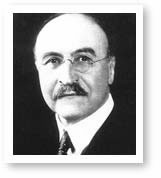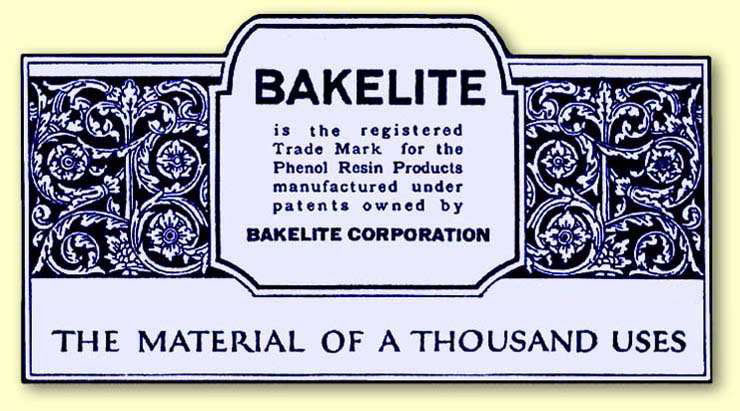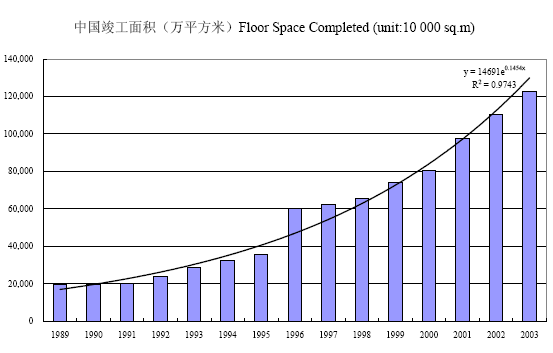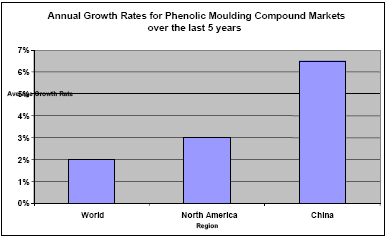…is renaissance coming for the first-ever synthetic polymer?
Paul Ashford Caleb Management Services Ltd.
Regulatory and marketing advisors to the Global Phenolic Resins Association (GPRA)
An enviable past
 In recent days, the phenolic resins community has celebrated the fact that, a hundred years ago in 1907, Belgian national, Leo Hendrik Baekeland discovered the societal value of reacting phenol with formaldehyde to form a phenolic resin. The event was marked during September by a symposium organised by the University of Ghent which was the place where Baekeland completed his doctorate and taught for several years.
In recent days, the phenolic resins community has celebrated the fact that, a hundred years ago in 1907, Belgian national, Leo Hendrik Baekeland discovered the societal value of reacting phenol with formaldehyde to form a phenolic resin. The event was marked during September by a symposium organised by the University of Ghent which was the place where Baekeland completed his doctorate and taught for several years.
The present phenolic resins industry was well represented, with the symposium itself being partially sponsored by both the European Phenolic Resins Association (EPRA) and the Global Phenolic Resins Association (GPRA).
However, what has become of the technology which Baekeland had invented after he sold it to Union Carbide on his retirement in 1938? This article seeks to explore that question and highlight where phenolic resins might be going in future.
Jack of all trades…
There are significant advantages to being “first on the block”! Bearing in mind that there had been naturally sourced resins (e.g. Shellac) for many years prior, there were already well-established markets for the product. However, not even Baekeland could have predicted the breadth of application for which his invention ‘Bakelite’ was to become used – particularly when used in the form of a moulding powder.

“A thousand uses” was probably no exaggeration as the introduction of ‘Bakelite’ coincided with the burgeoning growth of demand for electrical goods as well as more traditional items such as cookware.
Today, it seems rather ironic that the sheer success of ‘Bakelite’ has caused it to be associated with a by-gone age even to the point that it has more recently been an icon of the ‘retro’ movement. However, far from being a thing of the past, phenolic resins were only just beginning to have their real potential recognized.
…master of several!
As competitive materials began to emerge – initially in the guise of other synthetic thermosetting resins (e.g. epoxy) but increasingly with cheaper, oil-based thermoplastics, it became clear that phenolic resins should be focused on applications for which their specific properties where best suited. These properties were identified as being their high temperature resistance and their adhesive qualities. The following list of applications has therefore become synonymous with the present day phenolic resins market:
Construction
- Plywood adhesives
- Binders for mineral wool insulation
- Decorative laminates
- Components for contemporary adhesives
- Abrasives
Transport
- Under-bonnet uses (moulding compounds)
- Friction materials for brakes and clutches
- Foundry and refractory resins
- Rubber reinforcing resins
Household Appliances & other Articles
- Kitchenware (moulding compounds)
- Can coatings
- Ink formulations
- Electrical laminates
On the basis of these core activities the use of phenolic resins has grown consistently through the decades following sale of Baekeland’s business to Union Carbide. Demand has varied according to region, with probably the best example being the dominance of the plywood adhesives use in North America where timber-framed building techniques remain prevalent and highly reliant on stable and water-resistant binders.
 According to the Chemical Economics Handbook, the global market for phenolic resins had reached 2.46 million tonnes by 1997 (on a 100% resin weight basis) with 39% of demand in NAFTA, 24% in Europe, 5% in Japan and the balance of 33% in other regions.
According to the Chemical Economics Handbook, the global market for phenolic resins had reached 2.46 million tonnes by 1997 (on a 100% resin weight basis) with 39% of demand in NAFTA, 24% in Europe, 5% in Japan and the balance of 33% in other regions.
Trade between regions usually represents less than 10% of total demand, reflecting the fact that it is not usually considered cost-effective to transport resins (particularly liquid resins) over long distances. Therefore, regional production closely parallels demand in most cases.
Where leading-edge technology is required all around the world (e.g. in friction materials or rubber reinforcing resins), it has been common-place to see licensing agreements springing up to accommodate such transfer. However, in more recent years, a number of truly global manufacturers have emerged and these are able to transfer technologies internally.
Fire!!! Fire!!!
In the latter part of the 20th century, some of the short-comings of the cheaper, thermoplastics route began to emerge, particularly in respect to fire and smoke. A series of high profile fires in Europe and elsewhere threw attention onto the need for materials demonstrating all of the advantages of polymeric materials but without the drawbacks of the established incumbents.
It was on the back of this demand for higher performance materials that the phenolic industry launched an array of products based in the excellent intrinsic fire performance of the phenolic matrix (low flame spread and extremely low smoke emissions). Among these, phenolic foams and fibre reinforced phenolic composites are perhaps the most well-known.
Phenolic foam has been particularly successful in parts of Europe where the fire performance of core materials or exposed elements has been paramount. Perhaps even more significant has been the growth of phenolic foam use in Japan, where population density and building methods make phenolic insulation an obvious choice. As of 2004, phenolics represented over 10% of the total foamed insulation used in Japan having developed this market position from scratch in less than five years.
Where next – is renaissance on the way?
With the myriad of competitive materials now in the market place, there are usually one or more competitive options available for most applications. However, because the global phenolic resins market went through a substantial refining process in the mid 20th century, the current application portfolio has remained remarkably robust, and is only significantly influenced if the application itself comes under threat. It is little surprise then, that the industry has developed the reputation for being mature but seldom in decline. Unspectacular that may be, but it remains a reassuring position for existing players. For the foreseeable future, a growing population will require housing, transport and household equipment.

But is there any excitement on the horizon? You bet there is! With the increasing realisation of the true magnitude and potential impact of climate change, there is a race to insulate our buildings better…nowhere more so than in China where a staggering 1.2 billion square metres of construction was completed in 2003.
Whether the insulation of choice is phenolic foam or mineral wool, there will be a genuine clambering to ensure that the carbon footprints of new buildings are minimized and that those of existing buildings are improved. Inevitably, the phenolic resin industry will be a major benefactor of such trends. Coupled with this, the rational desire of developing country populations to aspire to traditionally ‘western’ aspirations will be an important driver in demand for existing technologies and an example of this is the rapid growth in demand for phenolic moulding compounds within China over recent years.

No room for complacency
The phenolic industry is facing a period of substantial opportunity. However, there are a number of challenges which also need to be faced. Among these are:
- REACH and the growing requirement for chemical characterization
- Resource efficiency and its implications for re-use and recycling in major market sectors
- Changing applications and the continued requirement to demonstrate societal value
These are challenges for which the industry has already been preparing and which are now the focus of the Technical Marketing Committee within the newly-formed GPRA. It will be the success of the industry working together on matters of generic consequence to phenolic resins that will be the springboard for the renaissance which many believe is just around the corner.
In conclusion
The market size for phenolic resins globally in 2003 was estimated at 3.24 million tonnes and represented a 32% increase on the value in 1997 (compound growth of roughly 5% per annum). Such growth is certainly the basis for future optimism, but the industry recognises that it cannot rely on past successes to achieve future goals. The formation of the Global Phenolic Resins Association (GPRA) represents an important step in the development of a platform to place phenolic chemistry at the core of the innovative solutions of the future. The world probably faces more challenges than it currently recognizes and will need the full range of material properties available to face these challenges. Phenolic resins have demonstrated themselves to be unique over a full century of usage – no other polymer can yet make such a claim! Baekeland would be very proud of that fact, but I doubt that he would be resting on his laurels. He would be off finding the next ground-breaking use for his invention!
The members of GPRA have a hard act to follow, but there is a real sense that the best could be yet to come!
Paul Ashford – September 2007
